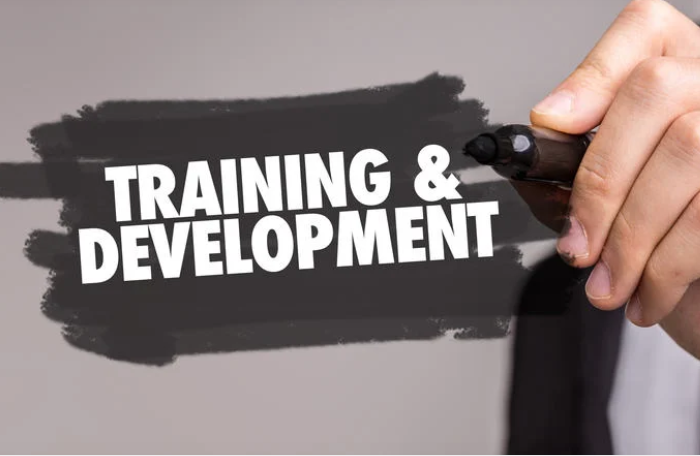
Training and development are essential for achieving organizational success in today’s highly competitive corporate landscape, where skilled talent is crucial for gaining a competitive edge.
With the fast pace of technological advancements leading to deskilling, most organizations have designated specific training hours each year to ensure their workforce remains capable and competitive.
Types of training and development opportunities
Organizations can provide a variety of in-person and online training and development opportunities for employees, utilizing in-house training, third-party resources, or off-site activities.
Common types of training and development programs include:
- Management Training;
- Compliance Training;
- Cybersecurity Training;
- New Employee Onboarding;
- Mentoring Programs; and
- Apprenticeships.
How does training and development affect employee performance?
i. Training for new responsibilities
As employees take on new roles or cross-train for multiple positions, training programs prepare them for additional responsibilities.
These initiatives equip staff with the skills necessary for their current roles while introducing essential leadership and technical skills for future growth. Apprenticeships, for example, allow employees to transition from trainees to higher-level positions.
ii. Staying updated on industry and technology
Training and development initiatives help employees remain informed about industry changes, including updates on ethics, safety, and quality standards.
Such programs also introduce new technologies and processes, equipping employees to effectively integrate these innovations into their daily tasks.
iii. Adapting to remote work
The shift to remote work, mainly accelerated by the COVID-19 pandemic, has prompted organizations to find and implement new tools and processes.
Training focused on these adaptations can facilitate a smoother transition for employees.
iv. Refreshing new Employee training
Onboarding processes often include initial training for new hires, but refresher courses can enhance retention of information.
These updates can be especially beneficial once employees become more familiar with their roles and the organization, and they offer an opportunity to reinforce critical topics like diversity, equity, and inclusion.
v. Addressing performance review insights
Training and development can help employees build on strengths and improve areas identified in performance reviews.
These programs provide targeted support for skills and knowledge development, helping employees meet their performance goals.
vi. Developing soft skills
Training programs can enhance essential soft skills such as resilience, emotional intelligence, and adaptability.
Fostering these skills can create a more productive and collaborative work environment.
vii. Boosting Employee Productivity
Training and development initiatives can significantly enhance employee productivity.
Organizations can assess the effectiveness of these programs by:
1. Evaluating work outcomes to gauge improvement.
2. Gathering feedback on expectations and outcomes by conducting pre and post training assessments.
3. Studying metrics like course completion rates and participation levels to analyze engagement data.
4. Assessing knowledge retention and engagement during training.
This is how training and development enhances productivity:
I. Improves Task Management
Programs help employees manage tasks more effectively, resulting in streamlined processes and reduced time spent on activities.
ii. Targets Skill Development
Training allows employers to focus on specific skills employees need, either by introducing new competencies or updating existing ones.
iii. Encourages Continuous Improvement
Regular upskilling fosters innovation and a willingness to improve processes with less need for oversight.
iv. Instils Confidence
Employees who undergo training develop greater confidence in their skills, which in turn instills confidence in their managers.
v. Enhances Employee Engagement
Supportive training initiatives contribute to a higher level of employee engagement and motivation, leading to improved performance.
vi. Reduces Employee Turnover
To mitigate the costs associated with employee turnover, training and development play a crucial role in:
- Commitment to Employee Growth: Regular training opportunities increase motivation and job satisfaction, while providing pathways for advancement. Reports indicate that many employees leave due to a lack of career development opportunities.
- Fostering a Sense of Value: Providing growth opportunities prevents stagnation and enhances employee morale, reducing the likelihood of burnout.
- Promoting Training as an Employee Benefit: Highlighting training opportunities as a key benefit can attract top talent and retain seasonal employees.
By focusing on these strategies, organizations can effectively enhance employee skills, improve overall performance, and foster a thriving workplace culture.

 © The Star 2024. All rights reserved
© The Star 2024. All rights reserved